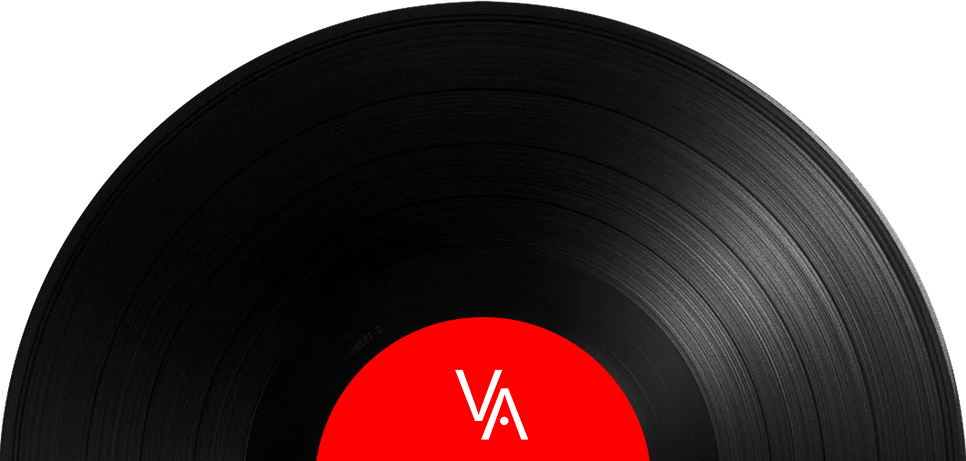
Mark–Almond was an English band that reached their peak of fame in the 1970s. It was fronted by Jon Mark - who sang and played guitar and harmonica and also handled percussion duties - and Johnny Almond, who played saxophone, flute and sang back-up vocals. Various other musicians recorded and toured with the duo at various times, including drummer Dannie Richmond, who was known for his association with jazz bassist Charles Mingus.
This album is their debut album, and is probably best known for the songs The Ghetto and The City. I first happened across it after hearing an edited version The City (minus the piano interlude) on Blue Thumb Records' All Day Thumbsucker compilation (a great set, by the way). I'd heard the song before but had forgotten all about it until I acquired the Blue Thumb compilation.
The record was pretty beat up and had lots of pops and ticks and was almost unlistenable, which prompted me to buy the CD, which sounded awful. It was far too bright and sharp enough that it hurt my ears if I turned the volume up even a little. I didn't play either the LP or the CD for a few years - I eventually gave the CD away - and although I did look, finding a cleaner copy of this LP was no easy task. It was originally released in 1970, and considering my copy is an original it's probably somewhat remarkable that it's still around at all. It looks like it went to a lot of parties.
But then the other day I decided to run it through my iSonic ultrasonic record cleaner. The result was, in a word, stunning! After two 15-minute cycles, separated by an application of surfactant, the record emerged absolutely quiet and warm and rich sounding. I almost couldn't believe it. It even looked good! All the scuff marks and what I'd assumed were scratches were gone.
This ultrasonic thing - it's not snake oil!
Mark-Almond's genesis goes back to 1963 when Jon Mark, using his real name John Michael Burchell, teamed up with Alun Davies, a former schoolmate and fellow singer-songwriter who would one day become a member of Cat Stevens' band. They recorded an album called Relax Your Mind for Decca Records as a duo, but nothing much happened. It wasn't promoted at all.
From 1965 on, Mark was a busy guy. Among other things, he accompanied Marianne Faithfull on some of her recordings and as a member of her band in concert. In 1968 he and Davies founded Sweet Thursday, a five-piece group that made one record for Fontana Records. The band included Nicky Hopkins, but again nothing much happened. They never even got 'round to touring.
Meanwhile, in 1969, Johnny Almond (born John Albert Almond) formed Johnny Almond's Music Machine and recorded two solo records. Almond and Mark began playing together on John Mayall's post-Bluesbreakers records, The Turning Point and Empty Rooms, both released in 1969. They enjoyed working together and decided to form Mark-Almond.
Their first two albums, this one and Mark-Almond II, released in 1971, were recorded for Blue Thumb and were noted for their embossed envelope-style album covers, which I think are great. Both records were well received and critically praised. Mark-Almond II contained the regional hit song One Way Sunday, which garnered airplay for them in Boston in the U.S.
The group then recorded two albums for Columbia Records, Rising (1972) and a live album, Mark-Almond 73 (1973), by which time the group had expanded to seven members.
In October, 1972, Mark was involved in an accident in Hawaii and lost most of the ring finger on his left-hand. He was quoted in Melody Maker as saying he "climbed like a native and fell like an Englishman."
The band would break up and reunite several times, and in the mid-1980s Mark moved to New Zealand and released a number of solo ambient music recordings. Almond, meanwhile, lived in the San Francisco Bay Area, where he died on November 18, 2009, from cancer, aged just 63.
This record opens with The Ghetto, which is a lovely meditation on city living and - I think - loneliness. The City is a remarkable statement, and the LP version is so much more than the single version, which omits the sax and piano improvisation in the middle of it. Those bits make the song, in my opinion, although even edited down for the 45 it's still a great song. The rest of the record is decent enough, but those two songs are, to my mind, the standout tracks. It's a record that reminds me how much better analogue sounds than digital, and doing an LP-CD A-B comparison - as I did - easily proves this. The record sounds wonderful and warm and spacious. The CD is flat and far too sharp. The best part is that you can still find this record on the cheap, although it may be in rough shape. But a good ultrasonic cleaning could rectify that!
Mark-Almond's recordings are said to be among those that were destroyed in the 2008 Universal fire.
Not every song on this record is a standout, but just for inclusion of The City and The Ghetto, this is …
Mark–Almond was an English band that reached their peak of fame in the 1970s. It was fronted by Jon Mark - who sang and played guitar and harmonica and also handled percussion duties - and Johnny Almond, who played saxophone, flute and sang back-up vocals. Various other musicians recorded and toured with the duo at various times, including drummer Dannie Richmond, who was known for his association with jazz bassist Charles Mingus.
This album is their debut album, and is probably best known for the songs The Ghetto and The City. I first happened across it after hearing an edited version The City (minus the piano interlude) on Blue Thumb Records' All Day Thumbsucker compilation (a great set, by the way). I'd heard the song before but had forgotten all about it until I acquired the Blue Thumb compilation.
The record was pretty beat up and had lots of pops and ticks and was almost unlistenable, which prompted me to buy the CD, which sounded awful. It was far too bright and sharp enough that it hurt my ears if I turned the volume up even a little. I didn't play either the LP or the CD for a few years - I eventually gave the CD away - and although I did look, finding a cleaner copy of this LP was no easy task. It was originally released in 1970, and considering my copy is an original it's probably somewhat remarkable that it's still around at all. It looks like it went to a lot of parties.
But then the other day I decided to run it through my iSonic ultrasonic record cleaner. The result was, in a word, stunning! After two 15-minute cycles, separated by an application of surfactant, the record emerged absolutely quiet and warm and rich sounding. I almost couldn't believe it. It even looked good! All the scuff marks and what I'd assumed were scratches were gone.
This ultrasonic thing - it's not snake oil!
Mark-Almond's genesis goes back to 1963 when Jon Mark, using his real name John Michael Burchell, teamed up with Alun Davies, a former schoolmate and fellow singer-songwriter who would one day become a member of Cat Stevens' band. They recorded an album called Relax Your Mind for Decca Records as a duo, but nothing much happened. It wasn't promoted at all.
From 1965 on, Mark was a busy guy. Among other things, he accompanied Marianne Faithfull on some of her recordings and as a member of her band in concert. In 1968 he and Davies founded Sweet Thursday, a five-piece group that made one record for Fontana Records. The band included Nicky Hopkins, but again nothing much happened. They never even got 'round to touring.
Meanwhile, in 1969, Johnny Almond (born John Albert Almond) formed Johnny Almond's Music Machine and recorded two solo records. Almond and Mark began playing together on John Mayall's post-Bluesbreakers records, The Turning Point and Empty Rooms, both released in 1969. They enjoyed working together and decided to form Mark-Almond.
Their first two albums, this one and Mark-Almond II, released in 1971, were recorded for Blue Thumb and were noted for their embossed envelope-style album covers, which I think are great. Both records were well received and critically praised. Mark-Almond II contained the regional hit song One Way Sunday, which garnered airplay for them in Boston in the U.S.
The group then recorded two albums for Columbia Records, Rising (1972) and a live album, Mark-Almond 73 (1973), by which time the group had expanded to seven members.
In October, 1972, Mark was involved in an accident in Hawaii and lost most of the ring finger on his left-hand. He was quoted in Melody Maker as saying he "climbed like a native and fell like an Englishman."
The band would break up and reunite several times, and in the mid-1980s Mark moved to New Zealand and released a number of solo ambient music recordings. Almond, meanwhile, lived in the San Francisco Bay Area, where he died on November 18, 2009, from cancer, aged just 63.
This record opens with The Ghetto, which is a lovely meditation on city living and - I think - loneliness. The City is a remarkable statement, and the LP version is so much more than the single version, which omits the sax and piano improvisation in the middle of it. Those bits make the song, in my opinion, although even edited down for the 45 it's still a great song. The rest of the record is decent enough, but those two songs are, to my mind, the standout tracks. It's a record that reminds me how much better analogue sounds than digital, and doing an LP-CD A-B comparison - as I did - easily proves this. The record sounds wonderful and warm and spacious. The CD is flat and far too sharp. The best part is that you can still find this record on the cheap, although it may be in rough shape. But a good ultrasonic cleaning could rectify that!
Mark-Almond's recordings are said to be among those that were destroyed in the 2008 Universal fire.
Not every song on this record is a standout, but just for inclusion of The City and The Ghetto, this is …



